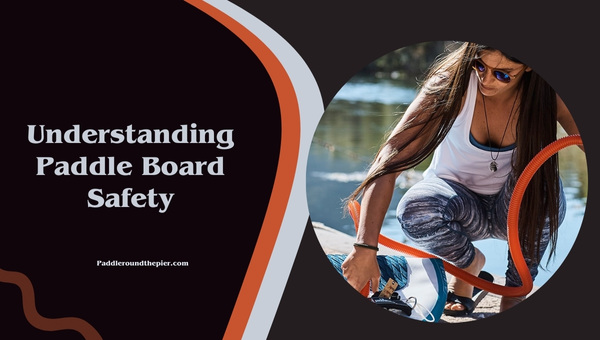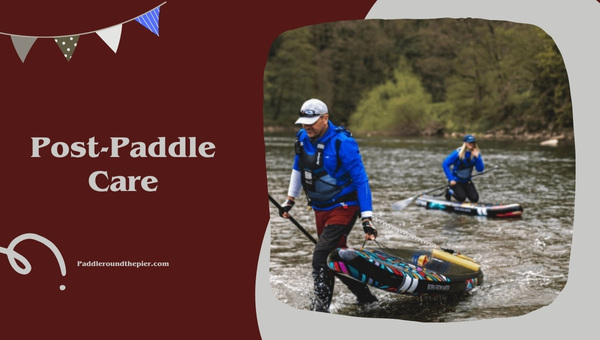Paddle Board Safety: Your Ultimate Guide for Safe Paddling
The gentle sway of the water, the brilliance of the sun in your face, and a paddleboard beneath your feet- what could ruin such serene moments? Well, negligence in paddle board safety could. Safe paddling, though often overlooked, is the linchpin holding together an enjoyable day on the waves.
As an avid paddler myself, I've learned that staying safe doesn't have to be complicated. There’s a lot you can do to ensure paddle boarding safety while still soaking up all the fun it offers. From good balance techniques to spot-on weather forecasts - it’s all about being prepared and knowledgeable. Tune into this guide, which I believe is your golden ticket towards mastering safe paddleboarding.
Here's What You Can Expect From This Guide:
- The whole nine yards on understanding why paddle board safety is paramount.
- A deep dive into common risks associated with this water sport.
- Five essential tips for safe paddling, including equipment advice and maintaining balance on a board.
- Insights into recognizing potential hazards while paddleboarding.
- Importance of having a buddy system – you’re never alone in this!
- Post-paddle care for both you and your gear – because aftercare matters too!
Understanding Paddle Board Safety
When it comes to enjoying water sports like paddleboarding, one factor reigns supreme – safety. There are many well-documented guidelines that also reiterate that safety is paramount while enjoying this sport.

Yes, paddleboarding is fun and adventurous. With its increasing popularity also comes the need to prioritize our own well-being.
Importance of Paddle Board Safety
Many folks might dismiss paddling as a laid-back activity with minor risks. But let me tell you - that's not quite accurate. The significance of Paddle Board Safety cannot be overstated for several reasons:
- Prevention of Accidents: Even though we are surrounded by water, accidents can still happen if we don’t prioritize paddleboard safety.
- Strategic Response: Knowledge of Paddle boarding safety equips us to respond effectively and timely during mishaps.
- Promotes Confidence: Being aware of paddle board safety fosters more confidence while paddling.
- Ensures Enjoyment: Safe paddling practices mean fewer hiccups and more fun!
Remember, the whole idea is not to scare you but to ensure that you feel at ease on your board!
Common Risks While Paddling
Knowing potential risks is a significant piece of the 'Paddle Boarding Safety' puzzle. It empowers us to act proactively rather than reactively during tough situations.
Let's dive into some common threats:
- Falling Off Your Board: It happens even to the best among us. That's why a good-quality life jacket is crucial for safe paddling.
- Collisions with Other Water Vessels or Objects: Busy waters can sometimes lead to unexpected collisions, so staying alert matters!
- Weather Changes: Stormy weather or strong winds? Perhaps better left for another day!
- Underwater Hazards: Unforeseen dangers may hide beneath the surface, like rocks or strong currents.
I'll say what I always say – better safe than sorry! Equip yourself with these paddle boarding tips, and you're set for your next water outing. In the following sections, let’s explore some tips for a safe paddling experience. We’ll discuss everything from the right gear to the significance of weather awareness, maintaining balance, recognizing hazards, and using the buddy system. Stay tuned!
5 Essential Tips for Safe Paddling
Paddle board safety depends a lot on the paddler's behavior and decision-making. I've compiled these five essential, safe paddling tips that every paddleboarding enthusiast should know:
Proper Equipment and Gear
From my personal experience, investing in proper equipment and gear enhances the level of safety while paddleboarding. Here are some crucial pieces:
- A quality paddleboard: Choose a board according to your weight, height, and proficiency level. Quality paddle boards are available on several online portals, which take into consideration all these factors for different types of users. For beginners, wider boards offer more stability.
- Life jackets or personal floatation devices (PFDs): These are non-negotiable for all water sports.
- Injury-preventative gear such as helmets and knee pads can offer added protection, especially in rough waters.
- Use a leash that connects you with your board to ensure it doesn't drift away from you if you fall off.
Remember: having quality equipment is not only part of practicing good paddleboard safety; it also boosts your confidence in the water.
Weather Awareness
Checking weather conditions before heading out for a session of paddling is crucial for maintaining paddle boarding safety. Checking the local weather forecast before setting off is more important than you might realize. It's not always sunny skies in the world of water sports! Here's what's important:
- Look out for sudden changes in wind speed and direction. Winds can make paddling challenging and risky.
- Avoid going out during storms, as lightning poses a significant risk.
- Large waves and swells could indicate an upcoming storm or severe weather conditions.
Always check local weather forecasts before setting off - because Mother Nature won't always give warnings!
Maintaining Balance on Board
Maintaining balance while stand-up paddleboarding can prevent unwanted falls or accidents – it’s one of my most cherished safe paddling tips.
- Whenever standing up on the board, always keep your feet parallel to each other approximately hip-width distance apart.
- Maintain a slight bend in your knees—it helps lower gravity center and adds stability.
- Keep your gaze on the horizon, not at your feet. It stabilizes your head and neck, promoting better balance.
Recognizing Hazards
Recognizing potential dangers is a critical element of paddle board safety. From underwater hazards to surface-level risks, here's what you should look out for:
- Underwater rocks: these can cause severe accidents or damage to your board.
- Strong currents: they can quickly pull you away from the shore, making it challenging or impossible to get back.
- Wildlife like alligators in certain regions – keeping a safe distance from them is wise.
Make sure you're familiar with the area where you'll be paddling—research local geographical features and wildlife behavior if necessary.
The Buddy System
The final tip might feel like advice from kindergarten days, but believe me, it's essential! Avoid paddling alone. Having someone else around if there's trouble surely increases paddleboard safety.
- If you must go solo, make sure to let someone know about your location and expected return time.
- Stand-up paddling in groups makes it easier to spot potential dangers and collectively handle difficult situations.
Post-Paddle Care
Taking care of yourself and your equipment post-paddle can extend the life of your gear and avoid unnecessary injuries. Let's delve into two essential areas to focus on: Equipment Care and Personal Care.

Equipment Care
Proper maintenance of your paddle board and gear is crucial to keep them in top working condition. Here are some pointers for cleaning and storing:
- Rinse Off: First things first, always rinse off your board after a Paddle Boarding session with fresh water; doing so would help eliminate any salt, sand, or dirt that may ruin its surface.
- Dry Before Storing: Once you've rinsed it off, let it dry thoroughly before storing it away to prevent moisture build-up, which could lead to mold or mildew.
- Use Paddle Board Bags: Consider purchasing a paddle board bag for added protection during transportation or storage.
- Maintenance Checks: Regularly inspect your board for any dents or damages that might need repair. Attending to these issues early prolongs the usability of your board.
Bringing these simple steps into practice will increase the life span of your gear and result in a safer paddling experience by avoiding any equipment malfunction during sessions.
Personal Care
Being on the water all day comes with its own set of challenges - sunburns, blisters, and sore muscles being the most common complaints among paddlers. The key here is prevention, followed by prompt action if need be. Here are a few tips I've found helpful:
- Sun Protection: Protect yourself from harsh sun rays by applying waterproof sunscreen on all exposed parts at least 30 minutes before you step out in the sun.
- Hydrate Yourself: Dehydration can lead to cramps while paddling; hence, ensure adequate fluid intake before, during, and after paddleboarding sessions.
- Use Skin Guards and gloves: Wearing gloves protects you from blisters, and using skin guards can prevent chaffing that might occur due to contact with a board or paddle.
- Stretch: Spend some time doing gentle stretches post-paddle to alleviate soreness in your muscles. This simple act aids better recovery by enhancing blood flow to the exhausted muscles.
While injuries are a part of any outdoor activity, quick action coupled with preventive measures can make post-paddle recovery a lot smoother, enabling you to enjoy consistent and safer paddling experiences.
FAQs
What should you wear for paddleboarding?
Comfortable swimwear or athletic clothing that allows you to move freely is ideal for paddleboarding. It's also wise to have a hat sunglasses, and apply sunscreen for sun protection.
Are there any age restrictions for paddleboarding?
Paddleboarding is typically suitable for all ages; however, children under the age of 12 should always be accompanied by an adult. It's best to check with local regulations before getting started.
How can I improve my balance on a paddleboard?
Regular practice and ensuring your weight is distributed evenly on the board can significantly improve your paddling balance. Core-focused exercises and yoga can also be beneficial off the board.
What is the right way to fall off a paddle board to avoid injury?
If falling seems inevitable, aim to fall sideways into the water while trying not to fall onto the board or let it hit you. Also, remember keeping your body relaxed will help mitigate injuries.
Conclusion
Once you understand the significance of paddle board safety, everything else falls into place. No doubt, paddleboarding is a fun and exhilarating sport, but it's crucial we do not undermine safety. The thrill should not compromise our well-being.
The equipment we use, our awareness of weather conditions, maintaining balance on the board - each factor holds importance in its own right. Recognizing hazards and always having a buddy around amplifies the safe paddling experience manifold. Post-paddle care, both personal and equipment, ensures you nearly eradicate any risk of injury.
Key Takeaway Points
- Importance of Paddle Board Safety.
- Risks while Paddling.
- Essential gears for Safe Paddling.
- Weather Awareness is key for Paddle Boarding Safety.
- Mastering balance on a paddle board enhances your experience.
- Knowing how to identify hazards is significant for Paddle Board Safety.
- Never underestimate the Buddy system when paddling around.